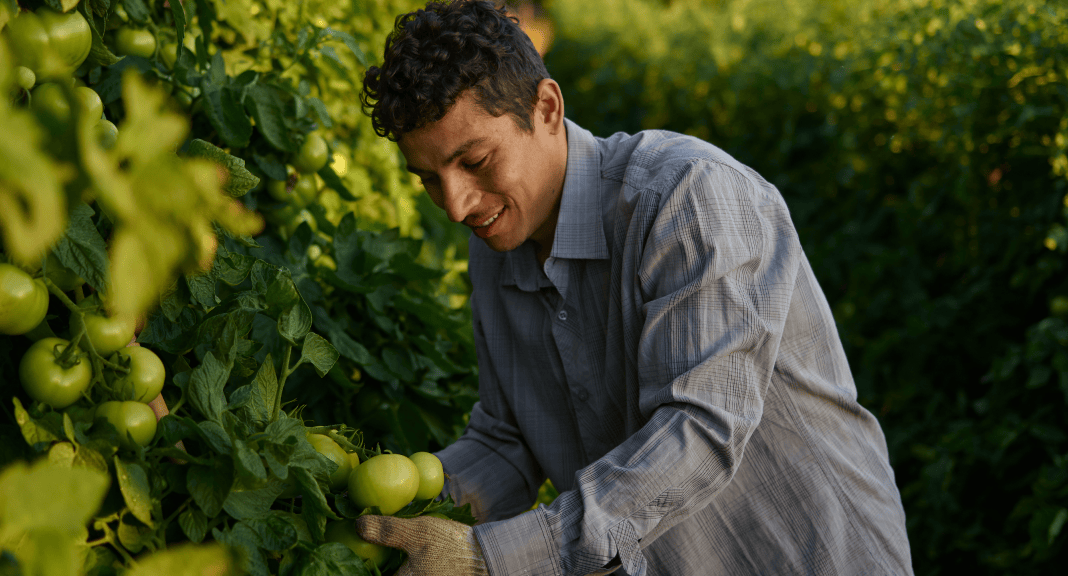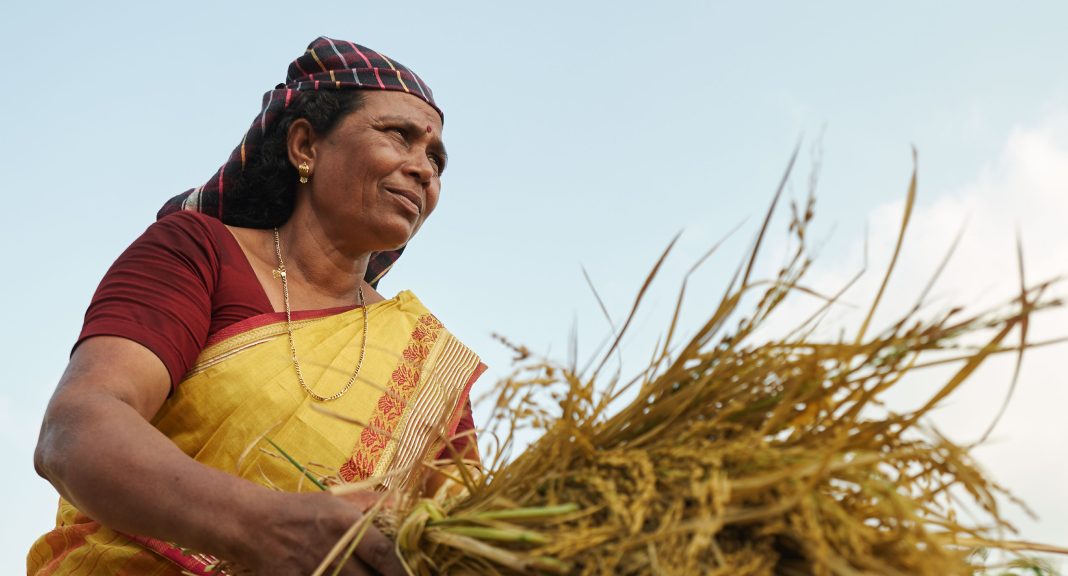At Corteva, we actively monitor and manage climate and nature-related impacts, risks, and opportunities across all areas of our business – from R&D to strategy and operations. By evaluating these impacts, risks, and opportunities, we uncover opportunities to drive growth, develop smarter innovations, and improve efficiency.
When making investment decisions, we consider carbon emissions as an element of overall financial returns. Our R&D teams are focused on creating next-generation products that enable more sustainable agriculture, helping farmers adapt to changing weather patterns. Meanwhile, our operations teams track and respond to both short- and medium-term climate challenges to ensure we stay ahead of emerging risks and opportunities.
Corteva’s climate assessment journey
Our journey to address climate and nature-related risks has been one of growth, innovation, and collaboration. By evolving from early assessments to advanced modeling, we are driving more sustainable solutions that help shape the future of agriculture.
2019-2021: broad qualitative assessments
- Evaluated physical and transitional risks
- Used Representative Concentration Pathways (RCP 4.5 and 8.5) and IEA scenarios (NZE 2050 and SDS)
2022: collaborative climate scenarios
- Partnered with the World Business Council for Sustainable Development (WBCSD) and 13 companies
- Developed agriculture-specific climate transition scenarios, integrating commodity pricing, acreage, and yield projections
2023–present: advanced data and analytics
- Integrated geospatial data and resilience analytics
- Corteva’s Decision Science teams enabling detailed internal modeling
- Producing more highly granular, data-driven strategies to map impacts, risks, and opportunities
Our advanced tools and partnerships are helping us better understand and respond to climate challenges. By combining geospatial data, internal modeling, and scenario analysis, we can anticipate risks, uncover opportunities, and ensure farmers have the solutions they need to thrive in a changing world.
While agriculture is often seen as a source of climate and nature risks, Corteva’s century of innovation proves the positive impact of technology by consistently delivering science-driven solutions that surpass historical benchmarks. By combining advanced environmental risk analytics with cutting-edge technology, we empower farmers to thrive in a changing world.
At the core of this mission are five key growth drivers that shape our strategy for creating more sustainable value:
Decision science
Provides predictive tools for informed decision-making.
Gene editing
Enhances crop resilience and productivity.
Agricultural systems
Enables new markets and sustainable practices.
Proprietary technology
Drives value creation and efficiency for farmers.
Biologicals and naturally-derived products
Supports nature-based solutions and soil health.
In 2023, we began to advance our climate risk assessment processes through the development of nature and climate resilience analytics, enabled by geospatial data to identify climate and nature risk exposure to our operations.
Physical climate risk modeling
For Corteva climate physical risk modeling, we use best-in-class tools and globally accepted decarbonization scenarios that include RCP 8.5 and 2.6. We also use best-in-class tools that rank the highest for hazards covered and geographical reach.
Physical climate risk scenarios | Scenario description |
|---|---|
RCP 8.5°C high-emissions scenario | Under RCP 8.5°C, emissions continue to rise throughout the 21st century and it is generally considered to be the worst-case climate scenario where temperature increases by about 5°C by 2100. |
RCP 2.6°C stringent pathway scenario | Under RCP 2.6°C, carbon dioxide emissions start to decline by 2020 and reach zero by 2100, also requiring methane emissions to reduce to approximately half of 2020 levels, while sulfur dioxide emissions decline to approximately 10% of those of 1980. |
Physical climate risks
Property damage: the risk of physical damage to the property impacting asset value.
Business interruption: the risk of business interruption due to down days and property disruption impacting revenue and costs.
Hazard | Acute | Chronic | Description | Potential impact on Corteva Agriscience |
|---|---|---|---|---|
Extreme heat | X | X | Occurs due to a prolonged period of excessively hot weather. | Heat is a failure-only hazard, which could halt production. |
Extreme wind | X | Occurs due to extreme wind events that produce sustained gusts of wind. | Extreme wind can cause property damage and interrupt production. | |
Surface water flooding | X | Occurs when the ground is over-saturated and/or drainage systems overflow and the excess water cannot be absorbed or drained away. | Surface water flooding can cause property damage and interrupt production. | |
Riverine flooding | X | Occurs when streams and rivers exceed the capacity of their natural or constructed channels to accommodate water flow and water overflows from the banks, spilling out into adjacent low-lying, dry land. | Riverine flooding can cause property damage and interrupt production. | |
Soil subsidence | X | Occurs due to the downward movement of soil, usually due to withdrawal of moisture. | Soil subsidence can cause property damage if low groundwater causes foundations to shift. | |
Forest fire | X | Occurs due to uncontrolled fire in an area of combustible vegetation. | Forest fires can cause property damage and interrupt production. | |
Coastal inundation | X | X | Occurs due to sea level rise and storm surges. | Coastal inundation can cause property damage and interrupt production. |
Climate transition risk modeling
Assessment of transitional risks is based on potential scenarios for legislation, technological development, or market conditions. Assessment is based on short-, medium-, and long-term horizons, with consideration given to the expected lifetime of the assets or activities. Our assessment includes upstream and downstream activities.
Each risk or opportunity is measured as the range between the decarbonization scenario (1.5°C and <2°C) and the baseline scenario (>3°C) values in 2050. All risks use the following scenarios:
Climate transition risk scenarios | Scenario description |
|---|---|
| |
>3°C Historic Trends Scenario | >3°C Historic Trends represents a scenario in which climate action remains stable at current levels, creating limited transition risks, but the world fails to limit global warming to manageable levels, resulting in substantial future physical risks. This scenario has low levels of transition risk. |
<2°C Coordinated Policy Scenario | <2°C Coordinated Policy Scenario is a scenario where timely policy and regulation work to curb emissions in an orderly fashion, decreasing the physical risk of climate but increasing the transition risk. This scenario has moderate levels of transition risk. |
1.5°C Innovation Scenario | Under 1.5°C Innovation Scenario, large demands from the energy system for bioenergy with carbon capture and storage (BECCS)2, coupled with greater-than-historic yield growth in agriculture and government support for R&D, enables early decarbonization and limited physical impacts of climate. This scenario has high levels of transition risk, but may be muted by technological progress. |
Climate transition risks
Technology: unrecovered investment in genetically modified organisms and gene-edited seed products.
Market: change in costs of Corteva inputs, including raw materials, energy, and labor. Change in revenue due to market drivers, such as shifting protein and starch demand.
Policy and legal: change in revenue from regulatory compliance related to land use and protected areas. Change in costs from a real or implied future price on carbon across global operations.
Opportunity: managing the footprint of our operations
Risk type & primary climate-related risk driver | Where in the value chain does the risk driver occur? | Likelihood of risk | Potential impact to Corteva | Velocity of risk | |
|---|---|---|---|---|---|
Government policy, technology development | Direct operations | Medium | Medium | Medium 5-10 years | |
What is the opportunity? | There are opportunities for Corteva to explore renewables and energy efficiency as levers for achieving the Company’s commitment to GHG reduction. This opportunity may focus on Corteva’s operations as well as suppliers becoming more efficient or using renewable energy. | ||||
What is Corteva doing about it? | Corteva is working to reduce GHG emissions while enabling a more resilient agriculture value chain. Corteva has an established climate strategy, including appropriate Scope 1 and 2 GHG reduction targets. The Company is seeking ways to reduce its impact and providing tools and incentives for customers to do the same. Corteva champions climate-positive agriculture, utilizing carbon storage and other means to remove more carbon from the atmosphere than it emits without sacrificing farmer productivity or ongoing profitability. Learn more about our operational improvements here. | ||||
Opportunity: valuing climate-resilient products
Risk type & primary climate-related risk driver | Where in the value chain does the risk driver occur? | Likelihood of risk | Potential impact to Corteva | Velocity of risk | |
|---|---|---|---|---|---|
Government policy, market demand | Upstream | High | High | High <5 Years | |
What is the opportunity? | Climate regulations may support accelerated efforts for climate-resilient agriculture. Corteva can partner with customers and offer decision science tools and products to help them access market opportunities for climate-resilient or low-carbon agricultural products. | ||||
What is Corteva doing about it? | Corteva carbon solutions are designed to simplify and enable the path to profitability for farmers who adopt new climate-positive practices for sequestering carbon and reducing on-farm GHG emissions. This initiative leverages the full spectrum of our seed, crop protection, biologicals, decision science, and agronomic expertise, while providing farmers with access to new markets through a simple, flexible way to sell carbon credits for a fair price on their terms. | ||||
- The Climate Action Reserve is an independent nonprofit that establishes strict standards for quantifying and certifying GHG emissions reduction projects to ensure the integrity, transparency, and financial value in the North American carbon market.
Opportunity: targeted and integrated crop analytics technologies
Risk type & primary climate-related risk driver | Where in the value chain does the risk driver occur? | Likelihood of risk | Potential impact to Corteva | Velocity of risk | |
|---|---|---|---|---|---|
Market demand | Upstream | High | High | High <5 years | |
What is the opportunity? | Corteva has opportunities related to the integration of crop protection, seed, biologicals, and data analytics. | ||||
What is Corteva doing about it? | Corteva has formed a unified Decision Science organization within its R&D function, enabling data analytics needs from the earliest parts of the R&D pipeline all the way to the digital sustainable solutions being used by farmers. | ||||
Examples of how we market these solutions to farmers:
Granular Insights
- The easiest way for farmers and their advisors to collaboratively plan, grow, and analyze each field.
- Make confident decisions with data-driven insights and harness the power of your data to boost yield and protect the bottom line.
- Get the most value from your seed investment with field-by-field plans that tailor variety and hybrid, rate, and placement to every acre you plant.
- Collaborate with your team to ensure that every acre achieves its full potential.
LandVisor™ advanced brush management
Get a comprehensive view of your land, revealing actionable insights to make the right decisions at the right time. LandVisor combines sophisticated imagery, data, decision science, and expert guidance to give you confidence in your land management decisions.
Opportunity: crop protection technologies
Risk type & primary climate-related risk driver | Where in the value chain does the risk driver occur? | Likelihood of risk | Potential impact to Corteva | Velocity of risk | |
|---|---|---|---|---|---|
Market demand | Upstream | Almost certain | High | High <5 years | |
What is the opportunity? | Corteva continues to advance crop protection offerings, many of which can help to address climate-related challenges. For example, nitrogen fertilizer is a source of on-farm emissions. Corteva continues to focus on nitrogen efficiency by delivering products that promote the retention of nitrogen in the soil and support profitability. There may be further opportunities for increased market demand for products that improve nitrogen efficiency and reduce emissions while supporting farmers’ businesses. | ||||
What is Corteva doing about it? | Optinyte® nitrogen stabilizer technology reduces denitrification, reducing the escape of GHG into the atmosphere. Conclusions from a meta-analysis were that, on average, use of Optinyte technology resulted in a 51% reduction of nitrous oxide (N2O) emissions and a 16% decrease in soil nitrogen leaching. The stabilization of nitrogen resulted in a 7% increase in crop yield by extending nitrogen availability in the soil for up to eight weeks during critical growth stages. Utrisha™ N nitrogen optimizer technology, a natural origin biostimulant, enables plants to improve nutrient use efficiency and provide nitrogen directly to crops as a sustainable supplemental nitrogen source. | ||||
Environmental benefits:
- Stabilized nitrogen reduces leaching or loss from denitrification
- Less nitrate loss in waterways
- Reduces emissions of GHG into the atmosphere
Yield gain:
- Increased yield in corn, cereals, and other crops
- Improves crop quality and plant health
- Protects the environment
- Reduces nitrate and GHG losses
- Improved efficiency
- Keeps nitrogen in the root zone
- Greater productivity
- Maximizes yield
Opportunity: advanced seed technology
Risk type & primary climate-related risk driver | Where in the value chain does the risk driver occur? | Likelihood of risk | Potential impact to Corteva | Velocity of risk | |
|---|---|---|---|---|---|
Government policy, technology development | Upstream | High | High | Medium 5-10 years | |
What is the opportunity? | Corteva is exploring new technologies and climate-related products. New genomic techniques may allow Corteva to increase yield potential and yield protection, resulting in climate resiliency being further integrated into seed products. | ||||
What is Corteva doing about it? | Corteva achieved verification that the organization is operating in conformance with the Framework for Responsible Use of Gene Editing in Agriculture. The framework outlines principles and guidelines that organizations can voluntarily follow to demonstrate their commitment to the safe and transparent use of gene editing technology. Gene editing techniques can allow seed companies to enhance crops to make them more resilient to environmental stresses and pests, while also producing higher yields, reducing the need for agriculture-related land-use change. | ||||





